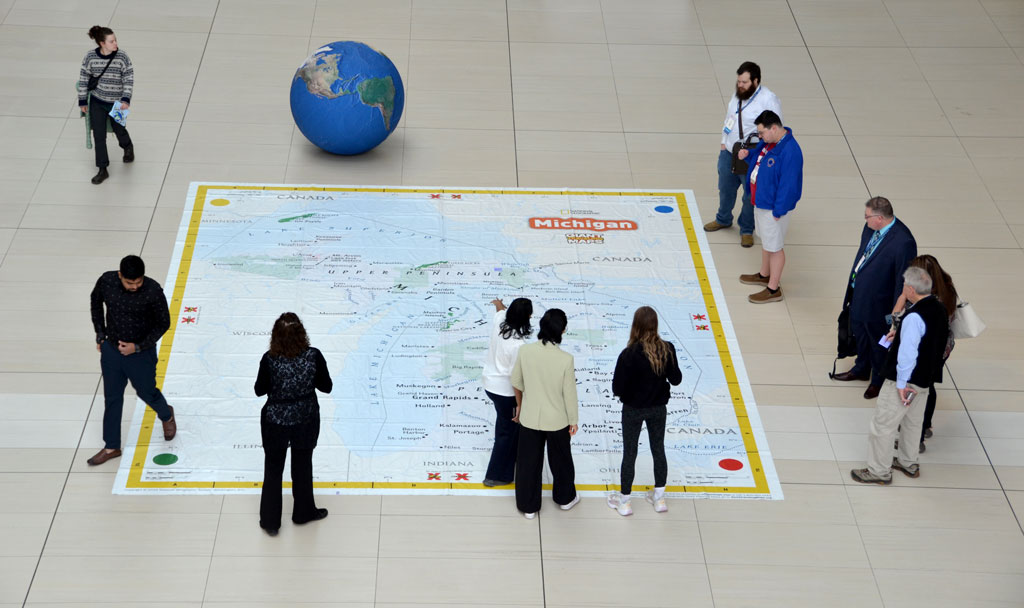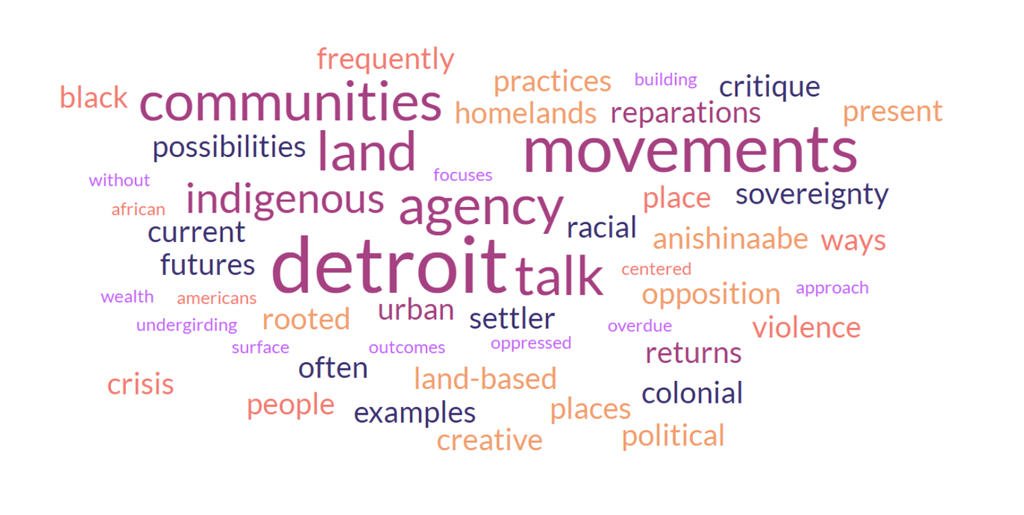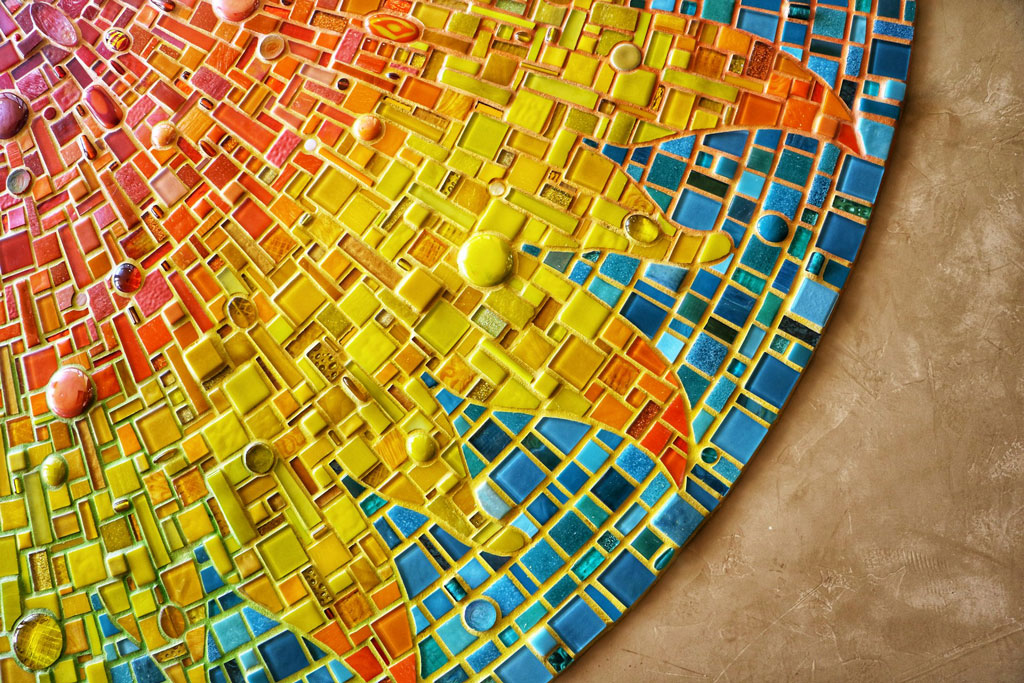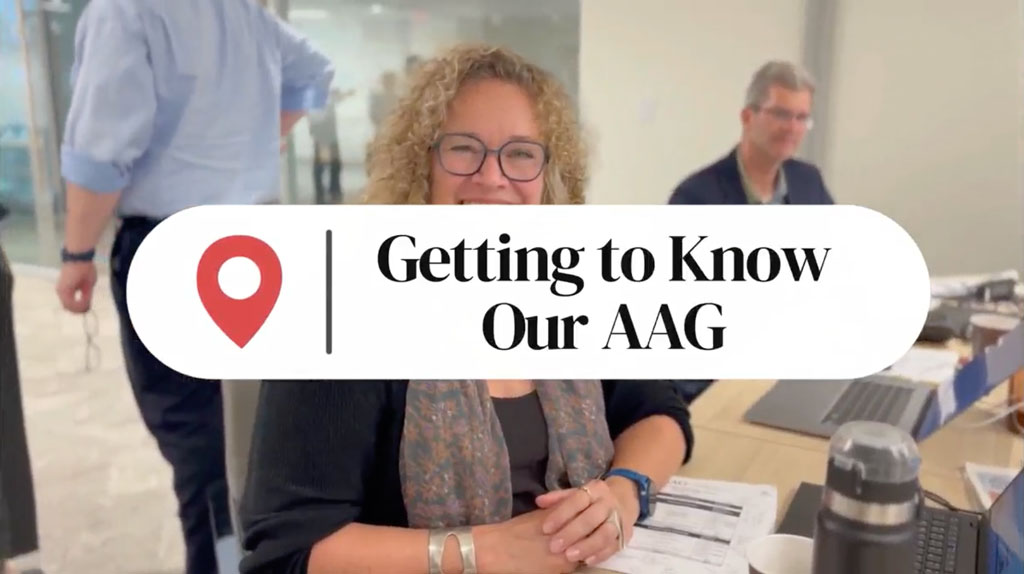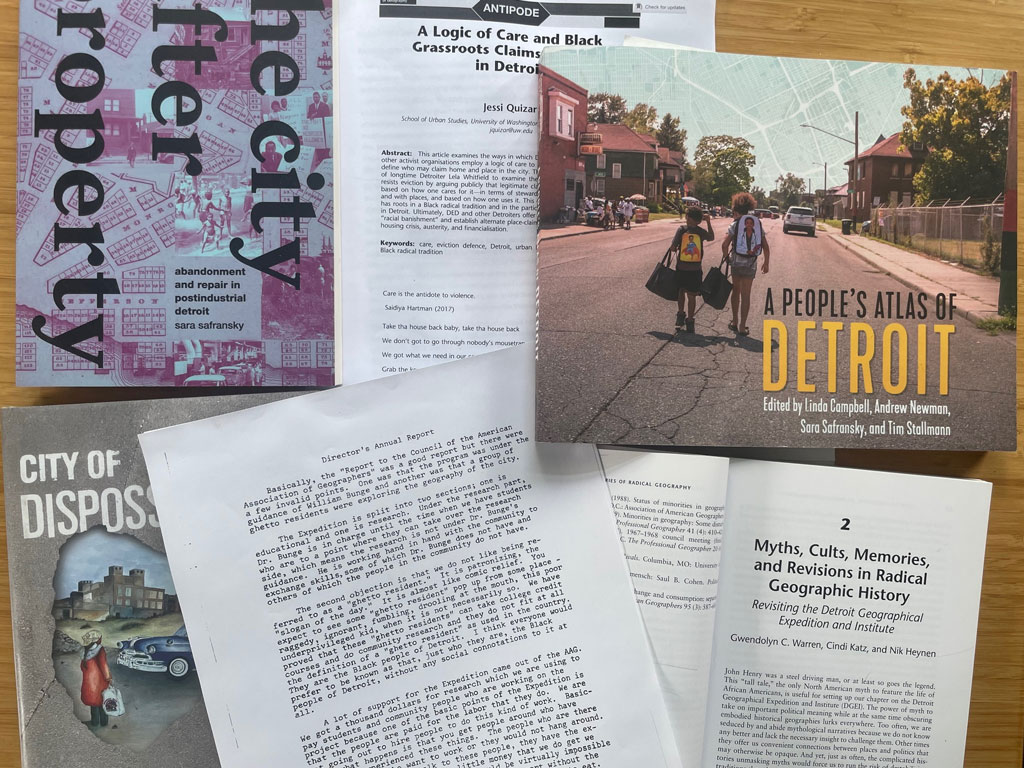Welcoming a New President to AAG—Interview with Bill Moseley

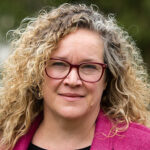
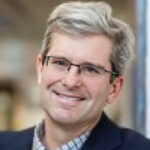 For the last President’s Column of her term, President Patricia Ehrkamp sits with incoming President William Moseley about his experiences within the discipline and his aspirations for her upcoming leadership at AAG. The following conversation offers insight into the new directions for the 2025-26 presidency.
For the last President’s Column of her term, President Patricia Ehrkamp sits with incoming President William Moseley about his experiences within the discipline and his aspirations for her upcoming leadership at AAG. The following conversation offers insight into the new directions for the 2025-26 presidency.
PE: Thanks for making time to meet, Bill.
WM: Great to be here. Thank you.
PE: So a good place to start is maybe to ask you, what brought you to geography?
WM: Well, I was born and raised in the U.S. So like a lot of people who grew up in the U.S., I had very minimal geography in my K-12 education. Where I was an undergraduate, there was no geography department. Same thing where I got my master’s degrees: an M.S. in Environmental Policy and an M.P.P. in International Public Policy. The University of Michigan previously had a geography department, and there were some geographers around in different programs, but no department when I was there. That said, when I was master’s student in the school of Natural Resources at the University of Michigan, my master’s thesis was on Indigenous soil management in West Africa and I remember reading Piers Blakie’s Political Economy of Soil Erosion (a foundational text in political ecology). That was my first clue that geographers might do something more than maps and memorizing capitals.
Then I lived and worked in a variety of African countries as a development professional before I became an academic geographer. I worked for Save the Children UK, which is a British nonprofit. I was in Mali, Zimbabwe, Malawi, and Lesotho, and when I was in Southern Africa there was a big hunger mapping project and a lot of the staff involved with that project were geographers who’d been trained in the UK. It was that group that started explaining to me what geography really was, which got me even more interested.
And then, I think, towards the end of a 10-year development career, I was having a bit of an existential crisis. I was wrestling with challenges in development. A big one was sort of the limits of bottom-up participatory development. Very good things could be happening at the grassroots level. But if they clashed with national-level policy or the programs of international institutions, they just couldn’t go very far.
So there was that challenge I was wrestling with. I had also worked for different development institutions in Washington, DC, like the World Bank and USAID. And there I was encountering people that were kind of out of touch with the grassroots. This was the 1990s. It was the heyday of neoliberal economic reform, and I was in the young professionals program at the World Bank, bright young people who meant well, but they didn’t really understand the grassroots consequences of the policies they were designing.
And so I think geography and its multi-scalar understanding of the world, became a way for me to think through those problems. I actually took my first geography course as a PhD student at the University of Georgia.
We had moved there because my wife got a job with Care International in Atlanta, and I didn’t really know what to do with myself. So why not get a PhD? And for the reasons I explained, I had been growing increasingly interested in geography and the University of Georgia had the only PhD. Program in geography in the whole state. So that’s what led me to geography.
PE: That’s interesting. It’s so opposite from my experience! I think I told you I started in fifth grade with geography classes [growing up in Germany]. So. But it’s fascinating. I had a class in college on development, geography, and some of the same issues that you just raised came up then as well.
So then, my next question is, knowing what you know about the field. Now, what would you tell, or what do you tell students about what makes geography so relevant to the questions and issues of the day?
WM: I think about how the policy making world in the Anglo-American context is really dominated by political scientists and economists. They’re the ones whose perspectives you often read or hear about in news programs. Geography has a really different angle to offer on issues. We need to speak up so that this perspective enters the public discourse.
There are often three aspects of this perspective that I highlight to students. Because I’m a nature-society geographer (my entryway into geography) one of the aspects I emphasize is the multi-scalar perspective. At the local level, a person interacting with the environment—It could be a farmer or anyone—we just can’t look at them in isolation. We need to think about their situated agency. They’re not just randomly deciding to grow cotton or corn. But they’re influenced by government policies and regional trading relationships, and the programs of international institutions.
The second piece that I really appreciate is that it’s not just the biophysical dimensions of environmental questions we examine, but the political, social, and economic aspects. And I think I’m especially taken with the work of scholars like Michael Watts, coming out of the political ecology tradition, and showing us that the way a community and society is organized deeply influences how we experience environmental fluxes, from drought to climate change. These things are deeply interconnected, so you can’t talk about the environment as an exogenous force. It’s more relational.
And then the third aspect I emphasize reflects the influence of post-structuralism, and thinking about the influence of discourse and narratives, and how our dominant paradigms and worldviews shape how we perceive the world. I experienced this firsthand as a development worker. Certain received wisdoms or things that I had learned in school (such as ideas about population growth, deforestation and desertification), influenced how I viewed the landscape. Then subsequently, in grad school, I had to deconstruct these ideas. It was kind of a mind-blowing experience to read scholars (such as Fairhead and Leach’s Misreading the African Landscape) who were interrogating the ideas that had shaped my thinking as a development worker
I think those three things, the multi-scalar approach to thinking about the human-environment interface, the biophysical and the social dimensions of environmental questions, as well as post-structuralism’s attention to discourse: These are the unique aspects of the geographic lens that I emphasize when talking to students.
PE: I agree, it’s getting past conventions. and the things we are used to hearing, and thinking differently and coming up differently with solutions also.
So let’s shift gears a little bit. What prompted you to run for office in AAG?
WM: I think part of it was seeing other people I knew run for office. Kavita Pandit was on my dissertation committee at the University of Georgia, and seeing her, and what she did as AAG President, was important.
I also know Past AAG President Alec Murphy pretty well, and I really respected the work that he did on public scholarship ,and he was a great mentor to me. AAG Past President Derek Alderman was a grad school friend and I actually worked for him as a teaching assistant, Seeing the work Derek did with the AAG was inspiring and he was also very supportive of public scholarship (something I value). These folks made me realize that one could do this and that it was important work.
Also, I think there’s this idea of giving back. So many people have helped me out and been good mentors to me. There’s so much good work that gets done that isn’t recognized. And so, as a community, we need senior scholars who can step up and help those who are coming up. Obviously, this is something you’ve worked on very hard with your important work on mentorship.
And then, maybe lastly, as I work at an institution that serves undergrads only, I felt that perhaps I have something to contribute in terms of thinking about the importance of undergraduate education relative to the rest of the larger discipline of geography.
PE: I think those are good reasons, and especially having benefited from great mentors and being able to give some of that back or pay it forward in so many ways.
WM: Exactly.
PE: You mentioned the undergraduate students. I wanted to ask what initiatives and projects you’re thinking about for your time as AAG President, what can we expect you to focus on?
WM: So undergraduate education is one of them. I am very interested in pathways into geography and the future of geography, which is thinking about younger geographers coming up through K-12, education and the importance of the undergraduate years. It’s sort of shocking to me that, and — I’ve always known that we were a small discipline in the United States, but 10-15 years ago there were only around 5,000 students in the U.S. who graduated with undergraduate majors in geography, and that’s subsequently declined 20% (AAG 2022). So this is a bit of an existential crisis. We’re not going to have a future if we don’t continue to have younger geographers coming up. I have established a task force to analyze pathways into geography. We’re calling it the Gen A project. This is the cohort of students that just started their first year in high school.
PE: I love it.
WM: So there’s that. I continue to be very interested in promoting public scholarship. It’s something I’ve done for a long time and I especially think, in the current political moment, with threats to democratic institutions and threats to the Academy, and threats to the way the U.S. engages with other parts of the world, that we need people to speak up, particularly people in positions of privilege, because there are other people who are under threat and can’t do that.
I’m also very interested in continuing to ensure that all forms of diversity are well represented within the AAG. This includes institutional diversity: R1s, and also R2s, and R3s; bachelor’s- and associates’- degree-granting institutions, tribal colleges, HBCUs, all the other Minority Serving Institutions, the whole lot.
I’m an international scholar and I’ve been thinking a lot about our relationship in the U.S. with geography associations in other parts of the world. And even though we might disagree with the politics of different regimes in power, I think it’s important that geography as an international discipline stretch across those political boundaries and work together.
The last piece that I’m interested in promoting is the relationship between academic geography and public policy making at different scales. You know: the IPCC on climate change, for example. I’ve done a lot of this type of work internationally related to food security (for the UN High Level Panel of Experts for Food Security and Nutrition). But we also have different science policy interfaces within lower levels of government within different countries. This is important work and the geographic perspective needs to be heard in these arenas.
PE: Lots of work to do for geographers. You bring lots of energy to this. But I do think no time like the present to get engaged.
I also wanted to ask, speaking about getting engaged or being engaged: What would you say to a member who considers volunteering or serving in office for the AAG
WM: We need good people to step up and serve. I do think the AAG is very democratic. And unlike some other organizations (where I’ve seen people become entrenched and serve in leadership roles for a long period of time), I believe there’s a healthy changing of the guard within the AAG. This creates lots of opportunities for different people to serve and to be represented. I would encourage people, if they put their name forward and it doesn’t work out the first time, to not be discouraged, and to put their name forward again. Because we need good people and new energy to keep the dynamism of the organization going.
PE: Right, I totally agree. I’ve been enjoying my time on Council, and I’m also glad that I’m handing over some responsibilities to you soon, and look forward to all the things that you’ll be doing, together with the rest of Council and everybody else who volunteers.
So is there anything else you’d want to say that I didn’t ask you?
WM: Well, maybe just one more further thing on the last question you asked. I think when you do step up and become involved with the AAG, you get to meet people from across the country and around the world. You learn how the association works and you demystify AAG governance. You know that process. You’re helping out, but you also learn a ton. I have certainly: over the past year I’ve had a very, very steep learning curve.
PE: Yes, it is a steep learning curve. But I will second the part of getting to know people from across the country and the world, and from all of these different organizations and institutions. That has been one of the most fun aspects for me as well.
Well, thank you for stepping up and for spending time talking with me today. I wish you the best of luck in your presidency.
WM: Thank you very much. I look forward to it.
Source for undergraduate data: AAG, 2022. The State of Geography: Data and Trends in Higher Education.
Please note: The ideas expressed in the AAG President’s column are not necessarily the views of the AAG as a whole. This column is traditionally a space in which the president may talk about their views or focus during their tenure as president of AAG, or spotlight their areas of professional work. Please feel free to email the president directly at [email protected] to enable a constructive discussion.
